Join More Than 50,000+ Subscribers and get latest camera news and rumors
NEW CAMERA VIDEOS ON YOUTUBE
|
By admin, on February 27th, 2022
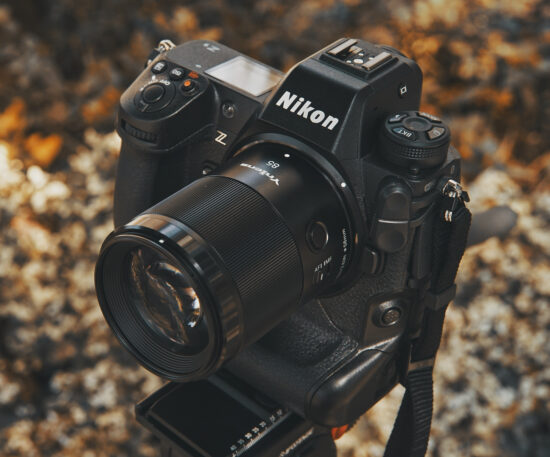
Yongnuo YN 85mm f/1.8Z DF DSM
We have two new announcements from Third-party lens makers, the first one is from popular lens maker Yongnuo, they have announced the YN 85mm f/1.8Z DF DSM lens for Nikon Z-mount. The image was published on Chinese social handles, although we will post an update on the official arrival of the lens.
So, finally, we will have some more affordable portrait options for Nikon Z Mount.
Browse all Yongnuo Lenses at B&H
KamLan 55mm F1.4
The second lens on the list is from KamLan, it’s a manual focus lens, KamLan 55mm f/1.4 lens for Nikon Z-mount.
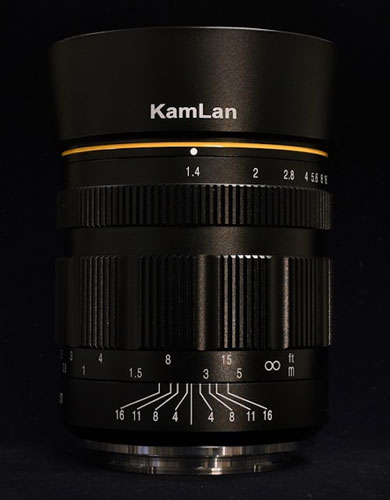
Major Features
- Focal length: 55mm
- Full-frame compatible
- Angle of view: 40.5 °
- Open F value: F1.4
- Lens configuration: 8 elements in 6 groups
- Number of aperture blades: 13 elements
- Shortest focal length: Approximately 0.3m
- Focus adjustment: Manual focus
- Compatible mounts: Sony FE, Nikon Z , Canon R
- Weight:475g Dimensions: 76.5x66mm
The angle of view of the standard lens is close to the viewing angle seen with the naked eye, making it an easy-to-use lens for all purposes. The open F value is 1.4, which is extremely bright, and it is also useful for shooting indoors or in dimly lit places such as in the evening. In addition, it can be used for a wide range of expressions such as portraits with a great blurred background by taking advantage of the shallow depth of field. A circular aperture with 13 aperture blades is used, so you can enjoy the beautiful circular bokeh. The lens body is a highly durable and luxurious finish that incorporates eight lenses including high-refractive glass in an all-metal housing. The aperture ring is clickless, so please use it not only for still shooting but also for video shooting
Kamlan lenses B&H Store
Follow us on our social pages FACEBOOK | TWITTER | INSTAGRAM to get live news + Nikon Rumors 24X7
By admin, on February 23rd, 2022
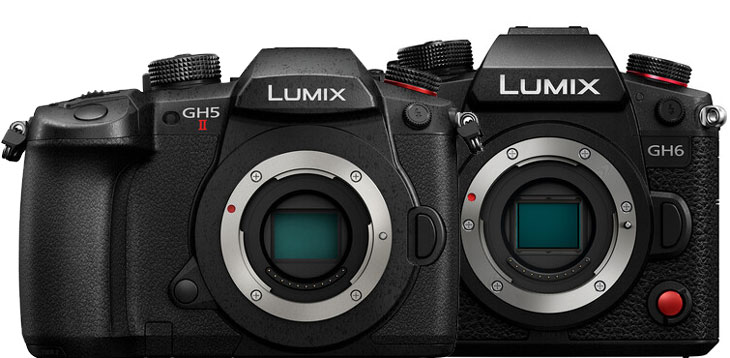
Panasonic GH6 v Panasonic GH5 specification comparison, let’s talk about the major difference between the two cameras.
Panasonic GH6 v Panasonic GH5, new 25.2-megapixel Live MOS Sensor boasts high-resolution, high-speed signal readout and wide dynamic range.
The LUMIX GH6 contains V-Log/V-Gamut – a first for LUMIX G Micro Four Thirds cameras – and provides 12+ stops and even 13+ stops of wide dynamic range using Dynamic Range Boost mode
Panasonic GH6 B&H Store
Pro Mirrorless Lens (All in one lens) –
Best Budget Lenses for Panasonic GH6 under budget
Tamron 14-150mm f/3.5-5.8 Di III Lens
| Lens Mount |
Panasonic GH6 |
Panasonic GH5 II |
| Sensor Resolution |
Actual: 26.52 Megapixel
Effective: 25.2 Megapixel (5776 x 4336) |
Actual: 21.77 Megapixel
Effective: 20.3 Megapixel (5184 x 3888) |
| Sensor Type |
17.3 x 13 mm (Four Thirds) MOS |
17.3 x 13 mm (Four Thirds) MOS |
| Crop Factor |
2x |
2x |
| Image Stabilization |
Sensor-Shift, 5-Axis (Improved) |
Sensor-Shift, 5-Axis |
| Built-In ND Filter |
None |
None |
| Capture Type |
Stills & Video |
Stills & Video |
New Major Features in Panasonic GH6 camera
- The GH6 is based around a completely new sensor: the highest resolution chip we’ve yet seen in the Four Thirds sensor size.
- New to the GH6 is the option to shoot in Apple ProRes 422 HQ and 422 formats. At first the camera’s ProRes modes will only be available for 5.7K capture, but DCI 4K and FullHD support will be added in firmware, due later in 2022.
- Camera’s 8-shot high-resolution mode, which delivers 50 or 100MP images,
- GH6’s noise reduction has been updated
- DFD is Updated and does very well in still mode, works best in Full HD 60p mode.
- Magnified live view while recording video
- Fan to extend the recording time limit of 4:2:2 10-bit 4K at up to 60p.
Exposure those
| Shutter Type |
Mech & Electronic Shutter |
Mechanical Focal Plane Shutter, Electronic Shutter |
| Shutter Speed |
Electronic Front Curtain Shutter
1/2000 to 60 Seconds
Up to 30 Minutes in Bulb Mode
Electronic Shutter
1/32000 to 1 Second
to 60 Seconds in Bulb Mode
1/25,000 to 1/8 Second in Movie Mode |
Electronic Front Curtain Shutter
1/8000 to 60 Seconds
Up to 30 Minutes in Bulb Mode
1/16000 to 1/24 Second in Movie Mode
Electronic Shutter
1/16000 to 1 Second |
| Bulb/Time Mode |
Bulb Mode, Time Mode |
Bulb Mode |
| ISO Sensitivity |
Photo
100 to 256,000 in Auto Mode (Extended: 50)
Video
100 to 12,800 (Extended: 50) |
Photo
200 to 25,600 in Auto Mode (Extended: 100 to 25,600)
Video
200 to 12,800 in Auto Mode (Extended: 100 to 12,800) |
| Metering Method |
Center-Weighted Average, Highlight Weighted, Multiple, Spot |
Center-Weighted Average, Multiple, Spot |
| Exposure Modes |
Aperture Priority, Manual, Program, Shutter Priority |
Aperture Priority, Manual, Program, Shutter Priority |
| Exposure Compensation |
-5 to +5 EV (1/3 EV Steps) |
-5 to +5 EV (1/3 EV Steps) |
| Metering Range |
0 to 18 EV |
0 to 18 EV |
| White Balance |
Presets: Auto, Cloudy, Color Temperature, Daylight, Flash, Incandescent, Shade, White Set 1, White Set 2, White Set 3, White Set 4 |
Presets: Auto, Cloudy, Color Temperature, Daylight, Flash, Incandescent, Shade, White Set 1, White Set 2, White Set 3, White Set 4 |
| Continuous Shooting |
Mechanical Shutter
Up to 14 fps for up to 65 Frames (Raw) / 95 Frames (JPEG)
Electronic Shutter
Up to 75 fps for up to 200 Frames (Raw) / 200 Frames (JPEG) |
Up to 12 fps at 20.3 MP
Up to 30 fps at 18 MP
Up to 60 fps at 8 MP |
| Interval Recording |
Yes |
Yes |
| Self-Timer |
2/3/10-Second Delay |
2/10-Second Delay |
The full sensor region of the GH6 is very similar to what you’d get by taking a 4:3 crop from a Super35 (APS-C) camera’s 16:9 video. However, while this should deliver comparable noise performance,
Internal Video Capture
| Recording Modes |
H.264/MOV/MPEG-4 AVC/ProRes 422 HQ 4:2:2 10-Bit
5728 x 3024 at 29.97p [1900 Mb/s]
5728 x 3024 at 23.98p/24.00p [1500 Mb/s]
5728 x 3024 at 25p [1600 Mb/s]
H.264/MOV/MPEG-4 AVC/ProRes 422 4:2:2 10-Bit
5728 x 3024 at 29.97p [1300 Mb/s]
5728 x 3024 at 25p [1100 Mb/s]
5728 x 3024 at 23.98p/24.00p [1000 Mb/s]
H.264 ALL-Intra/MOV 4:2:2 10-Bit
4096 x 2160 at 47.95p/50p/59.94p [600 to 800 Mb/s]
4096 x 2160 at 23.98p/24.00p/25p/29.97p [400 Mb/s]
3840 x 2160 at 47.95p/50p/59.94p [600 to 800 Mb/s]
3840 x 2160 at 23.98p/24.00p/25p/29.97p [400 Mb/s]
1920 x 1080 at 200p/239.76p [800 Mb/s]
1920 x 1080 at 100p/119.88p [400 Mb/s]
1920 x 1980 at 23.98p/24.00p/25p/29.97p/47.95p/50p/59.94p [200 Mb/s]
1920 x 1080 at 50i/59.94i [100 Mb/s]
H.264 Long GOP/MOV/MPEG-4 AVC 4:2:2 10-Bit
4096 x 2160 at 50p/59.94p [200 Mb/s]
4096 x 2160 at 47.95p [200 Mb/s]
4096 x 2160 at 23.98p/24.00p/25p/29.97p [150 Mb/s]
3840 x 2160 at 47.95p/50p/59.94p [200 Mb/s]
3840 x 2160 at 23.98p/24.00p/25p/29.97p [150 Mb/s]
1920 x 1080 at 200p/239.76p [200 Mb/s]
1920 x 1080 at 100p/119.88p [150 Mb/s]
1920 x 1080 at 23.98p/24.00p/25p/29.97p/47.95p/50p/59.94p [100 Mb/s]
1920 x 1080 at 59.94i [50 Mb/s] |
H.265/MOV 4:2:0 10-Bit
6K Anamorphic (4992 x 3774) at 23.98p/24.00p/25p/29.97p [200 Mb/s]
4K Anamorphic (3328 x 2496) at 50p [200 Mb/s]
DCI 4K (4096 x 2160) at 50p/59.94p [200 Mb/s]
UHD 4K (3840 x 2160) at 50p/59.94p [200 Mb/s]
H.264/MOV 4:2:2 10-Bit
DCI 4K (4096 x 2160) at 23.98p/24.00p/25p/29.97p [150 to 400 Mb/s]
DCI 4K (4096 x 2160) at 50p/59.94p [200 Mb/s]
UHD 4K (3840 x 2160) at 23.98p/24.00p/25p/29.97p [150 to 400 Mb/s]
4K Anamorphic (3328 x 2496) at 23.98p/24.00p/25p/29.97p [150 to 400 Mb/s]
Full HD (1920 x 1080) at 23.98p/24.00p/25p/29.97p/50p/59.94p [100 to 200 Mb/s]
H.264/MOV 4:2:0 8-Bit
4K Anamorphic (3328 x 2496) at 23.98p/24.00p/29.97p/50p/59.94p [100 to 150 Mb/s]
DCI 4K (4096 x 2160) at 23.98p/24.00p/25p/29.97p [100 to 150 Mb/s]
UHD 4K (3840 x 2160) at 23.98p/24.00p/25p/29.97p/50p/59.94p [100 to 150 Mb/s]
Full HD (1920 x 1080) at 23.98p/24.00p/25p/29.97p/50p/59.94p [100 Mb/s]
H.265/MP4 4:2:0 10-Bit
UHD 4K (3840 x 2160) at 23.98p/25p/29.97p/50p/59.94p [72 to 100 Mb/s]
H.264/MP4 4:2:0 8-Bit
UHD 4K (3840 x 2160) at 23.98p/25p/29.97p [100 Mb/s]
Full HD (1920 x 1080) at 23.98p/25p/29.97p/50/59.94p [20 to 28 Mb/s] |
| Variable Frame Rates |
5.7K: to 60 fps
DCI 4K: to 119.88 fps
3.8K: to 119.88 fps
1080p: to 300 fps |
|
| Gamma Curve |
Panasonic V-Gamut, Panasonic V-Log |
|
| Recording Limit |
Unlimited for DCI 4K (4096 x 2160) at 59.94p (4:2:2 10-Bit) |
|
| Video System |
NTSC/PAL |
| Built-In Microphone Type |
Stereo |
| Audio Recording |
MOV: 2/4-Channel 24-Bit 96 kHz LPCM Audio
MOV: 2/4-Channel 24-Bit 48 kHz LPCM Audio
MP4: 2-Channel 16-Bit 48 kHz AAC Audio |
External Video Capture
| External Recording Modes |
4:2:2 10-Bit via HDMI
DCI 4K (4096 x 2160) at 50p/59.94p
UHD 4K (3840 x 2160) at 50p/59.94p |
4:2:2 10-Bit via HDMI
DCI 4K (4096 x 2160) at 24.00p
UHD 4K (3840 x 2160) at 24.00p/25p/29.97p/50p/59.94p
Full HD (1920 x 1080) at 24.00p/25p/29.97p/50p/59.94p |
| IP Streaming |
None |
None |
Interace
| Media/Memory Card Slot |
Slot 1: CFexpress Type B
Slot 2: SD/SDHC (UHS-II) [U3/V30 or Faster Recommended] |
Dual Slot: SD/SDHC/SDXC (UHS-II) |
| Video I/O |
1 x HDMI Output |
1 x HDMI Output |
| Audio I/O |
1 x 3.5 mm TRRS Headphone/Microphone Microphone Input
1 x 3.5 mm TRRS Headphone/Microphone Headphone Output |
1 x 3.5 mm TRS Stereo Headphone Output
1 x 3.5 mm TRS Stereo Microphone Input |
| Other I/O |
1 x USB Type-C |
1 x USB Type-C (USB 3.2 / 3.1 Gen 1) Data Input/Output (Shared with Power Input)
1 x 2.5 mm Sub-Mini Control Input |
| Power I/O |
1 x USB Type-C Input/Output |
1 x USB Type-C Input/Output |
| Wireless |
5 GHz Wi-Fi 5 (802.11ac) Video Output, Audio Output, Control |
Bluetooth, Wi-Fi |
| Global Positioning (GPS, GLONASS, etc.) |
None |
None |
Focus
| Focus Type |
Auto and Manual Focus |
Auto and Manual Focus |
| Focus Mode |
Automatic, Continuous-Servo AF, Focus Lock AF Area Mode, Manual Focus, Single-Servo AF, Touch AF & Shutter |
Continuous-Servo AF, Flexible, Manual Focus, Single-Servo AF |
| Autofocus Points |
Photo, Video
Contrast Detection: 315 |
Contrast Detection: 225 |
| Autofocus Sensitivity |
-4 to +18 EV |
-4 to +18 EV |
Interface
| Type |
Built-In Electronic (OLED) |
Built-In Electronic |
| Resolution |
3,680,000 Dot |
3,686,000 Dot |
| Eye Point |
21 mm |
21 mm |
| Coverage |
100% |
100% |
| Magnification |
Approx. 0.76x |
Approx. 0.76x |
| Diopter Adjustment |
-4 to +3 |
-4 to +3 |
Environmental
| Operating Temperature |
14 to 104°F / -10 to 40°C |
14 to 104°F / -10 to 40°C |
| Storage Humidity |
10 to 80% |
10 to 80% |
Promised via future firmware:
- Direct recording to SSD over USB
- ProRes recording for DCI 4K and Full HD
- HDMI interface to v2.1 standard
- 4K/120 over HDMI with live view and 4K/120 Raw stream over HDMI
By admin, on February 22nd, 2022
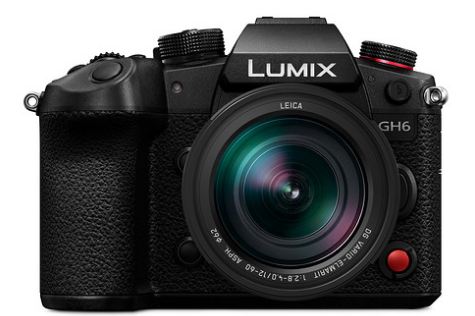
Panasonic GH6 finally announced by Panasonic, the camera features a newly developed image sensor as well as a brand new image processor. The camera improved the IBIS unit and also upscaled the DFD AF system compared to the original GH5.
Panasonic GH6 Major Feature
- 25.2MP Live MOS Micro Four Thirds Sensor
- 4K 60p 4:2:2 10-Bit Unlimited Recording
- 5.7K 60p, 4K 120p HFR, FHD 300p VFR
- ProRes 422 HQ, V-Log and DR Boost
- Dual I.S. 2, 7.5-Stop 5-Axis Stabilizer
- 100MP Handheld High-Resolution Mode
- 3.68m-Dot OLED Electronic Viewfinder
- 3.0″ 1.84m-Dot Free Angle Touchscreen
- CFexpress Type B & SD UHS-II Card Slots
- Built-In Active Cooling
The new 25.2MP High-resolution sensor helps the camera to capture videos up to 5.7K, with the help of image processor and a faster readout speed the camera is able to grab 4:2:0 video at up to 4K/120p and 1080/240p. You can gain MAX resolution with the camera 5.7K/30p video in Apple ProRes 422 HQ.
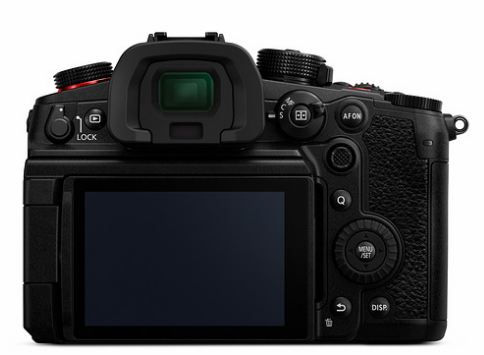
Panasonic has also added full V-Log/V-Gamut to match its cinema cameras, another first for a Micro Four Thirds model, which Panasonic says offers up to 13+ stops of dynamic range. Panasonic has improved its image stabilization rated 7.5 stops of compensation. This performance rating is maintained at longer focal lengths when combined with Dual I.S. 2-compatible lenses. On the rear of the camera is the same 3″ 1.84M-dot tilt-and-articulating display taken from the S1H.
The Panasonic Lumix GH6 will be available starting mid-March for $2,199 (body only).
Follow us on our social pages FACEBOOK | TWITTER | INSTAGRAM, to get LIVE News and Panasonic Rumors
Panasonic GH6 press release
The LUMIX GH6, a Compact Next-generation Mirrorless Camera Featuring Unlimited C4K/60p in 4:2:2 10-bit, 5.7K/60p in 10-bit and 4K 120p HFR / FHD Maximum 300fps VFR Video Recording
Newark, NJ (February 21, 2022) – Panasonic is proud to introduce the new LUMIX GH6 – the latest flagship model of the LUMIX G Series digital mirrorless camera based on the Micro Four Thirds system standard.
In 2009, Panasonic introduced the DMC-GH1, the first model of the LUMIX GH series, with a photo/video-hybrid concept. Since then, the GH series has evolved to include innovative features demanded by users and has become renowned by creators worldwide as a first-choice tool thanks to its performance, mobility, and rugged design. The LUMIX GH6 is the latest addition of the series that again breaks the boundaries of digital mirrorless cameras.
By increasing the effective pixel count by more than 20%1, the new 25.2-megapixel Live MOS Sensor boasts high-resolution, high-speed signal readout and wide dynamic range. The new Venus Engine is equipped with advanced image processing technologies to render high resolution images with natural noise texture and rich color reproduction, which is a hallmark of LUMIX cameras.
The LUMIX GH6 contains V-Log/V-Gamut – a first for LUMIX G Micro Four Thirds cameras – and provides 12+ stops and even 13+ stops of wide dynamic range using Dynamic Range Boost mode.2
The new LUMIX GH6 has again evolved to achieve 4:2:2 10-bit C4K 60p unlimited video recording time3, 4:2:0 10-bit 4K120p, 4:2:2 10bit FHD 240p HFR (High Frame Rate) and FHD maximum 300fps VFR (Variable Frame Rate) to reproduce dynamic motion of the subject. In addition to 4:2:0 10-bit 5.7K 60p, 4:2:0 10-bit 5.8K 30p (4.4K 60p) anamorphic 4:3 video can be recorded utilizing the full area of the sensor. It is possible to display de-squeezed footage on the monitor in real-time. 5.7K 30p video recording is available in Apple ProRes 422 HQ for the first time in LUMIX cameras, which enables non-linear editing without transcoding. Extended recording time is made possible with LUMIX’s heat management technology.
Boasting 7.5 stops of powerful image stabilization with its Dual I.S.2 for agile handheld shooting, the LUMIX GH6 has adopted a new super high-precision 5-axis gyro sensor with a new algorithm to achieve 7.5 stops of Body I.S.4 and Dual I.S.25. It also offers a wide variety of recording formats, resolutions and framerates to choose from according to the purpose.
With expertise drawn from firsthand opinions, the LUMIX GH6 has been designed to recognize high quality video expression and workflow efficiency from setup to delivery in addition to excellent depiction performance and mobility. Together with a wide array of lens options, Panasonic is committed to leading the industry with creators who are seeking for a new way to go beyond the limitations of creativity.
The LUMIX GH6 will be available at valued channel partners for $2,199.99 (body only) and $2,799.99 (body + L-kit package) in mid-March.
- In comparison with the sensor of the LUMIX GH5.
- Available in Creative Video mode only, Minimum ISO 800 in standard mode/ISO2000 in V-Log/HLG.
- Under the guaranteed operating environment. When using a battery. The recording time depends on the capacity of the battery and the recording media.
- Based on the CIPA standard [Yaw/Pitch direction: focusing distance f=60mm (35mm film camera equivalent f=120mm), when H-ES12060 is used.
- Based on the CIPA standard [Yaw/Pitch direction: focusing distance f=140mm (35mm film camera equivalent f=280mm), when H-FS14140 is used.
1. State-of-the-art technologies enhance video quality even higher
Panasonic has developed a new 25.2-megapixel Live MOS Sensor without LPF (Low-pass Filter) that boasts high resolution, high-speed signal readout that reduces rolling shutter problem and achieves wide dynamic range. The new Venus Engine delivers approximately twice the processing power1, enabling high-speed processing of the new sensor’s higher pixel counts, higher-resolution and higher-bit-rate video. It has evolved with three key technologies: New Intelligent Detail Processing, New 2D Noise Reduction and High Precision 3D Noise Reduction for video. The new Intelligent Detail Processing detects the edges and flat and detailed parts in a frame more accurately, resulting in highly realistic images. The new 2D Noise Reduction suppresses chromatic noise and improves the texture of luminance noise to make photo clear and natural even when shot at high sensitivity. With the High Precision 3D Noise
Reduction for video, the detection capability of still and moving parts has been advanced, which makes it possible to optimize noise reduction while minimizing afterimages. As a result, the image quality of video with dynamic motion is enhanced. In addition, high-precision Dual 3D Color Control enhances color reproduction by brightness level, saturation level, and hue level for rich, faithful color expression.
The combination of the new advanced sensor with the enhanced saturation performance and engine makes it possible to render clearer images even in 25.2-megapixel high resolution and lower minimum ISO sensitivity at ISO 100 [Photo: ISO 50(Extended) – 25600 / Video: ISO 50(Extended) -12800].
Dynamic range measures the luminance range that a digital camera can capture. The LUMIX GH6 provides 12+ stops of wide dynamic range for pre-installed V-Log recording capability. Even 13+ stops can be achieved using Dynamic Range Boost mode2. With the new Dynamic Range Boost mode, saturation-priority image generated from low ISO circuit and low noise image generated from high ISO circuit are synthesized at each pixel. The composite image achieves both low noise and high saturation, resulting in a clear and smooth HDR video with rich gradation.
For agile handheld shooting, the LUMIX GH6 has adopted a new super high-precision 5-axis gyro sensor with a new algorithm to achieve 7.5 stops of Body I.S.3 and Dual I.S.24. Thanks to this powerful image stabilization, even 100-megapixel high resolution images can be shot using the High-Resolution mode without a tripod. In High-Resolution mode, eight consecutive images are automatically shot while shifting the sensor using the Body I.S. (Image Stabilizer) mechanism and synthesized into a 100-megapixel equivalent (11552 x 8672-pixel) image that faithfully reproduces precise details to be saved as beautiful, highly realistic RAW and JPEG images. With its high mobility achieved by the compact, lightweight design and powerful Body I.S., the LUMIX GH6 makes previously impossible shooting, such as handheld ultra-telephoto shooting, possible. The 5-axis Dual I.S. 2 also works for video recording, including 4K video to record natural, comfortable-to-see video footage. It applies appropriate compensation according to the type of movement by precisely judging the cause – whether it was generated by panning, tilting or hand-shake. The B.I.S. compensates for camera movement even when an interchangeable lens without O.I.S. (e.g., a cine lens) is used.
- In comparison with DC-S1H
- Available in Creative Video mode only, minimum ISO2000 in V-Log/HLG.
- Based on the CIPA standard [Yaw/Pitch direction: focusing distance f=60mm (35mm film camera equivalent f=120mm), when H-ES12060 is used.
- Based on the CIPA standard [Yaw/Pitch direction: focusing distance f=140mm (35mm film camera equivalent f=280mm), when H-FS14140 is used.
2. Professional-quality video performance for unlimited expression
The LUMIX GH Series has created an epoch-making industrial sensation by achieving outstanding video recording performance with advanced features that meet professional quality levels and standards. The LUMIX GH6 again evolves to achieve 4:2:2 10-bit C4K 60p unlimited video recording time1. 4:2:0 10-bit 4K120p (Equivalent to 5x slow motion2) and 4:2:2 10-bit FHD 240p HFR (High Frame Rate) video recording with audio also available to enable impressive expression such as speed ramping. FHD maximum 300fps (Equivalent to 12.5x slow motion2) and VFR (Variable Frame Rate) reproduce the dynamic motion of the subject.
In addition to 4:2:0 10-bit 5.7K 60p, 4:2:0 10-bit 5.8K 30p (4.4K 60p) anamorphic 4:3 video can be recorded utilizing the full area of the sensor. It is possible to display de-squeezed footage on the monitor in real time. 5.7K 30p internal video recording is available in ProRes 422 HQ and ProRes 422 for the first time in the LUMIX series using the CFexpress Type B card, which enables non-linear editing without transcoding. DCI4K, FHD ProRes 422 HQ and ProRes 422 will be supported with a future firmware update.
The LUMIX GH6 is capable of 4:2:2 10-bit C4K 60p internal recording and simultaneous output in 4:2:2 10-bit C4K 60p over HDMI. Since it is HDMI 2.1 compliant, it will support C4K 120p HDMI video output with a future firmware update. Moreover, capability of C4K 120p RAW output to Atomos Ninja V+ monitor recorder over HDMI 2.0, is under development, which also will be available with a future firmware update.
The LUMIX GH6 contains V-Log/V-Gamut capture to deliver a high dynamic range and broad colors. V-Log renders a very flat image while maintaining all the color information within the image. This means that there is a greater level of play when the images are put through post-production processes. The Live MOS sensor of the LUMIX GH6 achieves a wide color gamut known as V-Gamut, which is the GH6’s optimum color space and provides a color space that is wider than BT.2020. V-Log has log curve characteristics that are somewhat reminiscent of negative film and V-Gamut delivers a color space even larger than film.
The LUMIX GH6 offers the renowned colorimetry of the VariCam line of cinema cameras and uses their V-LOG picture profile and wider V-Gamut. For monitoring your work and to see an image that is no longer in LOG, the GH6 includes the V709 LUT (Look Up Table) with Rec.709 standard in the camera by default, this LUT can be output over HDMI or to the cameras monitors or both. It is possible to install your own LUT’s into the GH6 and access them from the V-Log View Assist menu. For users of the Varicam and EVA1 the GH6 can support LUT’s in their .vlt format, and for users of other camera systems we also support the .cube format.
The LUMIX GH6 offers a host of practical features. There are a variety of settings in Photo Style including different Cinelike gamma presets. “Cinelike D2” and “Cinelike V2” have similar gamma setting characteristics for film production. In response to requests from professional users, video assist functions such as Waveform Monitor, Zebra Pattern, Luminance Spot Meter, Frame Marker, Anamorphic Desqueeze Display, Red REC Frame Indicator and Tally lamps are available. The Safety Zone Marker, a new feature on the LUMIX GH6, shows a guide of 95%, 90% or 80% recording area to secure safety zone for the composition and for the subtitles. Center Marker now allows you to choose the type of the marker. In Color Temperature Setting, the kelvin values can now be displayed on the recording screen.
By using both an XLR microphone connected via the XLR Microphone Adaptor DMW-XLR1 (Ch1 Ch2) and built-in microphone (Ch3, Ch4), 48/96kHz 24-bit high-res audio can be recorded3. Users can combine several types of external microphones that fit the recording situation such as outdoor interviews where the voice of the speakers and ambient sound need to be recorded. The channel to use for the headphone can be switched during video recording and audio menus can be directly accessed with the Fn1 button on the camera top for easy sound level check during 4-channel audio recording. For the external microphone, a Φ3.5mm stereo jack is provided.
4K 60p Time Lapse videos can also be produced inside the camera. With the Exposure Leveling function, the exposure is automatically adjusted to prevent large changes in brightness between adjacent frames to produce equable time lapse footage.
USB host capability will be added with a future firmware update, making it possible to write the data directly to the SSD.
- Under the guaranteed operating environment. When using a battery. The recording time depends on the capacity of the battery and the recording media.
- In 24p
- 4-channel audio recording is available in ProRes and MOV.
3. Agile mobility and smart operation for professional use
With the incorporation of the new 25.2-megapixel Live MOS Sensor and new Venus Engine, the auto focus performance of the LUMIX GH6 has been improved. With higher speed signal processing by the Venus Engine and an improved AF algorithm, subject detection performance has been dramatically enhanced to achieve higher precision AF.
To support high precision focusing, the LUMIX GH6 provides practical options for manual focusing. While focus is shifted by a variable amount according to the rotation speed of the focus ring for non-linear setting, it is shifted with a designated amount according to the rotational quantum of the focus ring for linear setting. Sensitivity (amount of focus shift per rotational quantum) can be selected from 90 to 360 degrees by 30-degrees to enable intended focus operation. The MF Assist, which enables the focus point to be enlarged, is now available photo shooting and video recording*.
The LUMIX GH6 is capable of high-speed burst shooting at 14 (AFS) / 8 (AFC) fps with a mechanical shutter and 75 fps with an electronic shutter.
The LUMIX GH6 adopts the 3.0-inch free-angle touch-control monitor in 3:2 aspect with 1,840K-dot high resolution. It does not cause interference even when both the HDMI cable and USB cable are connected by adjusting the tilt/rotation angle of the monitor. A large, 3,680K-dot OLED (Organic Light-Emitting Diode) LVF (Live View Finder) features a high magnification ratio of approx. 1.52x / 0.76x (35mm camera equivalent).
*Up to 60p. Does not work in Variable Frame Rate mode.
4. Reliable quality and performance for professional use and connectivity
Overheating is a fatal issue to continuous video recording especially when the resolution and the frame rates are increased. However, the LUMIX GH6 achieves unlimited video recording time1 in C4K 60p 4:2:2 10-bit by optimizing the heat dissipating path with a forced-cooling mechanism and allows video recording of VFR/HFR, ProRes and high-resolution footage exceeding 4K for an extended time.
To ensure the GH6 can withstand heavy field use, it is composed of a magnesium alloy full die-cast front / rear frame, splash-resistant2,dust-resistant, and freeze-resistant down to -10 degrees Celsius/14 degrees Fahrenheit. The shutter unit also is durable for approx. 200,000 cycles. The Rec button is located on both the top and front of the camera, which makes it easy to start and stop recording even when shooting at a low angle or with a shoulder rig.
The LUMIX GH6 is equipped with double card slots. The CFexpress card (Type B) supports internal recording of high bitrate video at 800Mbps or more including 5.7K 30p ProRes 422 HQ and C4K 60p ALL-I. The SD Memory Card UHS II V90 supports internal recording of video at 600Mbps or less. It also is possible to choose the recording method from Relay Recording, Backup Recording, Allocation Recording using both the SD Memory Card and CFexpress Card.
For the terminal, HDMI Type A is provided. Plus, a cable lock holder for the HDMI/USB cable is bundled to prevent issues such as unplugging on location. The LUMIX GH6 supports USB 3.2 Gen 2 for high-speed writing and readout. The 2200mAh high-capacity battery can be recharged either via AC or USB. It also complies with USB PD (Power Delivery) when the corresponding Battery Charger DMW-BTC15 (sold separately) is used. The LUMIX GH6 is compatible with Time Code IN/OUT synchronization through the flash synchro terminal and bundled BNC converter cable with BNC cable. This makes the non-linear editing of footage shot with multiple cameras easy.
Wi-Fi 5 GHz (IEEE802.11ac)3 is effective in addition to 2.4 GHz (IEEE802.11b/g/n). This provides secure and stable connection with a smartphone, tablet and other devices on location for smooth remote control. The transmission speed of photo/video data is increased by using the 5 GHz band. Compatibility with Bluetooth 5.0 (called BLE: Bluetooth Low Energy) enables constant connection with a smartphone or tablet with minimum power consumption. The settings of a LUMIX GH6 camera can be copied and transmitted wirelessly to other GH6 cameras when using multiple GH6 cameras. The LUMIX Sync application for iOS/Android devices allows remote control of the camera using a smartphone or a tablet via easy wireless connection. In addition to wireless control via a Remote Shutter DMW-RS2 (sold separately), application software LUMIX Tether enables tethered shooting via USB. Users can control the camera by connecting it to a PC via USB. It lets them view the image on a large PC screen while shooting.
- Under the guaranteed operating environment. When using a battery. The recording time depends on the capacity of the battery and the recording media.
- Splash Resistant is a term used to describe an extra level of protection this camera offers against exposure to a minimal amount of moisture, water or dust. Splash Resistant does not guarantee that damage will not occur if this camera is subjected to direct contact with water.
- 5GHz Wi-Fi is not available in some countries.
5. A wide variety of LUMIX G lenses – Exclusively designed for Micro Four Thirds camera
The Panasonic LUMIX G Series boasts a total lineup of 30 Micro Four Thirds lenses to choose from according to the purpose. Above these, the LEICA DG VARIO-SUMMILUX 10-25mm / F1.7 ASPH. (X-H1025) and the LEICA DG VARIO-SUMMILUX 25-50mm / F1.7 ASPH. (H-X2550) zoom lenses features full-range F1.7 large aperture and are favored by professional film creators as well as other single-focal- length F1.7 or F2.8 lenses. In addition, the LUMIX GH6 memorizes the name and its focal length of analog lenses such as anamorphic lenses or old lenses to provide suitable setting of camera’s in-body image stabilizer automatically when those lenses are used.
Considering use with the LUMIX GH6, Panasonic has reviewed and updated the firmware of the lenses. It is possible to control AF operation by pressing the shutter button halfway, or by pressing the AF-ON button, when [200.00p] is set in high frame rate video mode when the following lenses are used:
- H-E08018
- H-X1025
- H-X2550
- H-ES12060
- H-ES50200
- H-RS100400
- H-XA025
- H-ES200
- H-HSA12035
- H-FS12060
- H-HSA35100
- H-FSA45200
- H-FSA100300
H-NS043/H-X012/H-X015 lenses will be compatible, as well as have Focus Ring Control and improved AF performance in 24.00p/2398p mode, following a firmware update scheduled for March 1st, 2022.
6. Future firmware update
To enhance the performance of the LUMIX GH6, the functions below will be available with future firmware updates per consumer demand.
- DCI4K ProRes 422 HQ / ProRes 422
- FHD ProRes 422 HQ / ProRes 422
- USB-SSD direct recording
- 4K 120p HDMI Video output during Live View
- DCI 4K 120p HDMI RAW Video Data Output to ATOMOS Ninja V+
For more information on the lens’ firmware update, please refer to https://av.jpn.support.panasonic.com/support/global/cs/dsc/download/index.html
By admin, on February 17th, 2022
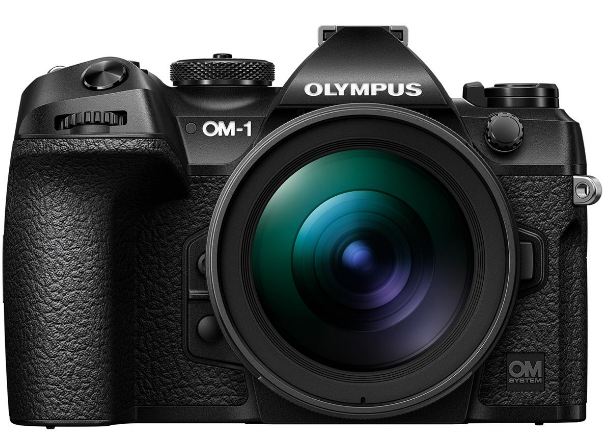
Finally, we have the Oly OM-1 Camera, the camera features a 20.4MP Micro Four Thirds Stacked CMOS sensor powered by a TruePic X Dual Quad Core Processor. The sensor features four photodiodes at each pixel position, allowing each pixel to contribute to X-type phase detection autofocus.
Olympus OM-1 Major SPecification
- OM-1 Mirrorless Digital Camera Highlights
- 120 Frames Per Second Continuous Shooting
- 8.0 EV Stops of Stabilization Performance
- 80MP High Res Shot Mode
- M.Zuiko ED 12-40mm f/2.8 PRO II Highlights
- F2.8 Bright Aperture
- IP53 Weather sealed Performance
- 24 – 80mm 35mm Equivalent Focal Length
- Sensor Size: Micro Four Thirds Format
- Resolution: 20 MP
- Max Video Quality: 4K 60fps
- Lens Included: 12-40mm
- In-Body Stabilization: 5-Axis Digital
- Configuration: Body & Lens
- WiFi: Yes
- Edition: Standard
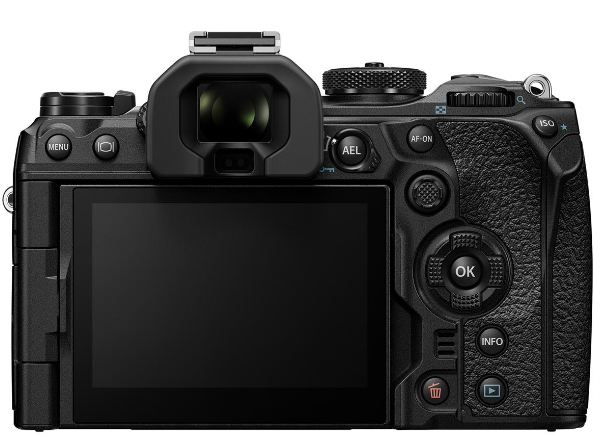
The mechanical shutter is limited to 10 frames per second (fps) with its mechanical shutter, but this jumps to 120 fps (blackout-free) using the electronic shutter, with support for autofocus and auto-exposure up to 50 fps.
Olympus OM-1 Video Specification
4K video (UHD or DCI) at up to 60 fps and Full HD (1080p) video at up to 240 fps. Internally, the camera can record 10-bit video internally. OM-1 can output a Raw 12-bit 4:4:4 video on external recorders.
OM-1 can output a Raw 12-bit 4:4:4 video on external recorders.
Did you get that? and the camera is weather-sealed without any cooling fan inside it with 8 stops of IBIS unit (sensor floating in air still camera manages to record 12 bit 4:4:4 videos without heat warning ) … amazing isn’t it?
The ‘Cross Quad Pixel AF’ system gives 1,053 cross-type phase detection AF points, which work to drive the OM-1’s AI-trained autofocus modes for ‘formula cars, motorcycles, airplanes, helicopters, trains, and birds, as well as animals (dogs and cats).’ Below is a demonstration of the animal eye autofocus system working with a dog
Pricing and Availability
OM SYSTEM OM-1 (Body Only)
Pricing: $2,199.99 USD; $2,799.99 CAD
Approximate Availability date: Early March 2022
OM SYSTEM OM-1 Kit with M.Zuiko Digital ED 12-40mm F2.8 PRO II
Pricing: $2,799.99 USD; $3,599.99 CAD
Approximate Availability date: Early March 2022
Separately Available Accessories
Olympus OM-1 Press Release
The New OM SYSTEM Flagship Model Revolutionizes Emerging Technology and Newly Developed Devices
Bethlehem, PA, February 15, 2022 – OM Digital Solutions is pleased to announce the introduction of the OM SYSTEM OM-1: This Micro Four Thirds System standard interchangeable lens camera features a compact, lightweight design for superior mobility along with high image quality. It is scheduled to go on sale in early March 2022. As the OM SYSTEM flagship camera, this model will deliver a one-of-a-kind experience to customers, driving the desire for photographers to create. This interchangeable lens camera delivers inspiration in a lightweight design that users can take along anywhere to capture the precise photos they have in mind.
The OM SYSTEM OM-1 is the culmination of new devices and cutting-edge digital technologies, delivering high image quality that goes beyond the expectation of the sensor size. It also features autofocus and sequential shooting performance that far surpasses conventional models, and dramatically improves basic performance. Computational photography technology has been incorporated, empowering the photographer to utilize such features as Live Composite and High Res Shot mode, without the need for advanced shooting techniques, special equipment, or skills, delivering a rich variety of expressive power for more photographic opportunities than ever before.
Thanks to the superb mobility of the Micro Four Thirds system, the OM SYSTEM OM-1 can be taken anywhere at any time, allowing anyone to take advantage of its high performance to capture versatile images with high image quality. This is the next generation Micro Four Thirds camera brought to you by OM SYSTEM.
MAIN FEATURES:
1. High image quality that goes beyond the expectations of the sensor size
This model features a high-end compact, lightweight body unique to OM SYSTEM, including the new 20 Megapixel1 Stacked BSI Live MOS sensor, and the latest TruePic X image processor, which is three times faster than previous models. The OM SYSTEM OM-1 delivers high image quality that goes beyond the expectations of the sensor size. Not only does it take full advantage of high-resolution M.Zuiko Digital lens performance, delivering our highest ever resolution2, but new noise processing technology increases the maximum normal sensitivity to ISO 25600, and an expanded maximum sensitivity to ISO 102400. Furthermore, the dynamic range has been improved thanks to the latest image processing technology. These improvements deliver a richer range of tonal expressions than ever before, from shadows to highlights.
The high-performance image stabilization in the OM SYSTEM OM-1 delivers up to 8.0 steps3 of compensation with 5-axis sync IS, and up to 7 steps4 with the body alone. The new Handheld Assist feature makes it easy to capture slow shutter speed effects that previously required a tripod.
2. Computational photography functions that empower the photographer to further expand their imaging expressions
Photographic expressions that have traditionally required special equipment and a computer to composite images are available in the OM SYSTEM OM-1. Thanks to computational photography (advanced digital image processing) technology, these imaging features have been incorporated in this interchangeable lens camera at an early stage. The OM SYSTEM OM-1 uses a combination of the new TruePic X image processor, the new image sensor, and the latest digital technologies to make computational photography features better and even easier to use. When paired with high-performance M.Zuiko PRO lenses, the system makes it possible to capture a greater range of imaging expressions only possible with the OM SYSTEM OM-1.
High-Res Shot
The processing time has been significantly reduced. Handheld High-Res Shot mode takes approximately five seconds to merge. Popular for landscape photos due to the ability to capture high-resolution approximately 50 Megapixel images by merging multiple images; and Tripod High-Res Shot, which creates ultra-high-resolution approximately 80 Megapixel images. Composite processing technology reduces noise by approximately two steps for amazingly high pixel count and low noise. A dedicated button is also included on the camera to quickly switch between normal shooting and Handheld High-Res Shot/Tripod High Res Shot for improved usability.
Live ND
Create slow shutter speed effects as though you were using an ND filter up to ND64 (six steps) (ND2 – ND64). When LV Simulation is activated, you can check the slow shutter speed effects in the viewfinder and on the LCD monitor before shooting and create the same effects while using ultra-wide-angle lenses that cannot accommodate an ND filter.
Live Composite
In this setting, Lighten Composite is used to add only the brighter sections to the composite image to prevent the common problem of images that are too bright overall when shooting long exposures, resulting in beautiful photos with plenty of variation. This feature is now compatible with image stabilization and can be used during handheld shooting.
Focus Stacking
This feature alters the focus to capture and composite multiple shots for recording photos that are in focus from the foreground to background. The compositing time has been dramatically reduced for easier use.
HDR Shooting
Multiple images at differing exposures are merged to create one shot with a wide dynamic range, including highlights and shadows.
3. High-speed performance of newly developed autofocus and dramatically improved performance for maximum 50 fps5 sequential shooting with AF/AE tracking
A quad-division photo diode configuration allows for On-chip Phase Detection in both vertical and horizontal directions. 1,053-point, all cross-type, Cross Quad Pixel AF is incorporated; designed to focus on various patterns of subjects across all pixels and the entire shooting range. The high-speed calculation capabilities of the new TruePic X processor and the new AF algorithm enable high-speed, high precision focusing on the subject no matter where it is in the frame. Furthermore, this model is equipped with AI Detection AF,
which was developed using deep learning technology. In addition to greater than ever high-speed, high-precision subject recognition and tracking, this model can recognize formula cars, motorcycles, airplanes, helicopters, trains, and birds, as well as animals (dogs and cats). In addition to C-AF, this functionality is also supported with S-AF for shooting a wider variety of scenes. The detection precision, tracking performance, and responsiveness of Face Priority/Eye Priority AF have been improved significantly.
There have also been exponential improvements to sequential shooting performance, reaching up to 50 fps blackout free AF/AE tracking at approximately 20.37 Megapixel, and up to 120 fps AF/AE locked ultra-high-speed sequential shooting. When using Pro Capture, which is designed for capturing shots that are not possible during normal shooting, you can enjoy sequential shooting up to 50 fps (AF/AE tracking) and up to 120 fps (AF/AE locked).
4. Camera body features enhanced dustproof and splashproof performance, along with a high-speed, high-resolution electronic viewfinder
The dustproof and splashproof performance is achieved by incorporating sealing materials at the appropriate locations on the tough, lightweight magnesium alloy body, ensuring IP53 dustproof and splashproof protection class6, and freezeproof performance to -10°C. Because this model is compact, lightweight, and features dustproof and splashproof performance, it makes for a powerful ally when shooting in punishing environments. The high-performance EVF is equipped with approximately 5.76 million dot resolution, a viewfinder magnification of up to 1.65x, a display delay of 0.005 seconds7, and 120 fps high-speed display, to ensure optimal shooting comfort. Not only does it feature all the best facets of an optical viewfinder, but it also offers the advantages of a digital viewfinder, making it possible to view subjects and check exposure, even in dark locations. The menu screen configuration has been completely redesigned on the OM SYSTEM OM-1. Items have been split, merged, and reclassified, and descriptions have been simplified to make it easier to find the desired functions, and make changing settings simpler for first-time users.
5. Enhanced video functions for creators (10bit 4K 60p, Full HD 240p)
Stable handheld video recording is possible thanks to a compact, lightweight body and industry-leading image stabilization. Creative video functions include 4K 60p for smooth, high-definition videos, and high-speed movie with Full HD videos at a maximum 240p. The camera also supports H.264 (8bit), H.265 (10bit), and Multi Frame Rate for recording video clips over 30 minutes in length. In addition to RAW data output up to 12 bit 4:4:4 to external devices for advanced post-production tasks, the OM SYSTEM OM-1 supports OM-Log for a greater level of freedom over imaging expressions thanks to color grading, which allows users to capture highlights and shadows without overexposing or underexposing shots. The new HLG (Hybrid Log Gamma)8 video picture mode has been added for easier HDR video recording.
Other Features
- Reliable SSWF (Supersonic Wave Filter) dust reduction system that vibrates at a speed of more than 30,000 times per second to instantly remove dirt and dust from the image sensor
- Highly durable shutter unit that clears 400,000 shutter actuations (according to in-house testing conditions)
- Staggered layout UHS-II compatible dual SD card slots make it easier to remove recording media
- Five rating categories in the on-camera rating system
- Night view mode makes it possible to view subjects even in dark environments
- Starry Sky AF makes focusing on stars easier than ever
- Record shooting location information with minimal power drain (smartphone connection)
- Equipped with an independent AEL button and AF-ON button
HLD-10, Power Battery Holder (sold separately)
This power battery holder designed exclusively for the OM SYSTEM OM-1 offers the same controls in the vertical position as the horizontal position. It offers IP53 dustproof and splashproof construction when paired with the OM SYSTEM OM-1. When two BLX-1 Lithium-Ion Rechargeable Batteries in the camera and the HLD-10 are used together, approximately 1,000 shots (based on CIPA tests) can be captured. When attached to the OM SYSTEM OM-1, the BLX-1 Lithium-Ion Rechargeable Battery can be charged9 inside the HLD-10.
Pricing: $349.99 USD; $449.99 CAD
Approximate Availability date: Early March 2022
RM-WR1, Wireless Remote Control (sold separately)
This wireless remote-control features IP5710 dustproof and splashproof construction, enabling remote shooting (communication range: within 5 m of the camera body) in any kind of environment, when paired with the OM SYSTEM OM-1. It enables remote shutter release, control of autofocus, image display control between still images and videos, as well as release lock during long exposures. This power saving design is achieved using Bluetooth® Low Energy communication. It can be used to start and stop video recording and connects with the included cable for wired remote use. The RM-WR1 can also be used as a wired remote control when connected using the cable included with Micro Four Thirds camera models equipped with a compatible remote cable terminal, such as the Olympus OM-D E-M1X and the Olympus OM-D E-M1 Mark III.
Pricing: $99.99 USD; $129.99 CAD
Approximate Availability date: Early March 2022
BLX-1 Lithium-Ion Rechargeable Battery (bundled/sold separately)
This is a high-capacity, 2,280 mAh lithium-ion battery. It can be recharged approximately 500 times.
Pricing: $99.99 USD; $129.99 CAD
Approximate Availability date: Early March 2022
BCX-1 Battery Charger (sold separately)11
This dedicated charger can simultaneously charge two BLX-1 Lithium-Ion Rechargeable Batteries. Batteries are fully charged in approximately 150 minutes. Because the battery is compatible with the USB Power Delivery standard, it can be charged with a power bank (9V/3A output).
Pricing: $149.99 USD; $189.99 CAD
Approximate Availability date: Early March 2022
SBCX-1 Battery Charger (sold separately)
BCX-1 battery charger bundled with one BLX-1 lithium-ion battery.
Pricing: $219.99 USD; $279.99 CAD
Approximate Availability date: Early March 2022
APPLICATIONS/SOFTWARE FOR PHOTOGRAPHY AND EDITING SUPPORT
OM Image Share Smartphone App (OI.Share)
This smartphone app is used to connect to the camera via Wi-Fi, transfer images and shooting data, and perform remote operations. On the OM SYSTEM OM-1, OI.Share can be used to update the firmware on the camera body and backup/restore camera settings.
OM Workspace v2.0 Image Editing Software
This image editing software includes advanced RAW processing and editing features. It boosts the abilities of the USB RAW Data Edit feature on the OM SYSTEM OM-1 and enables editing such as tone curve and Dehaze adjustments in addition to processing settings that can be applied on the camera. AI Noise Reduction has been added for RAW processing. When applied to RAW files captured on a supported camera12 for processing, it helps generate clearer images.
Company names and product names contained in this release are trademarks or registered trademarks of their respective companies.
By admin, on February 16th, 2022
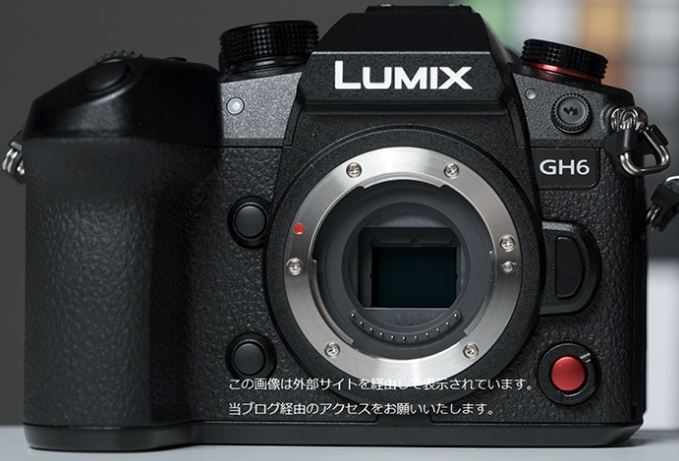
Panasonic GH6 camera images leaked prior to the announcement, as we all know the official announcement of the camera is on Feb 21, 2022.
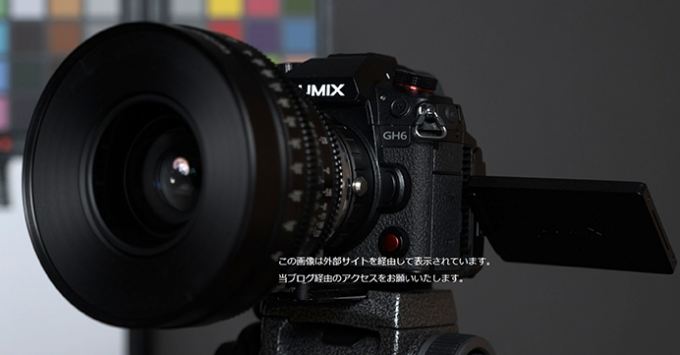
Panasonic Specification:
- Newly developed processor image sensor
- Unlimited recording
- 4: 2: 2 10bit DCI
- 4K 60p 4: 2: 2 10 bit
- Cinema4K 260p 4K
- 10bit 120p HER / VFR
- 10bit 5.7K 60p
Panasonic GH6 at B&H Website
See at Panasonic official website
more updates about Panasonic GH6
Follow us on our social pages FACEBOOK | TWITTER | INSTAGRAM, to get LIVE News and Panasonic Rumor
source asobinet.com
By admin, on February 13th, 2022
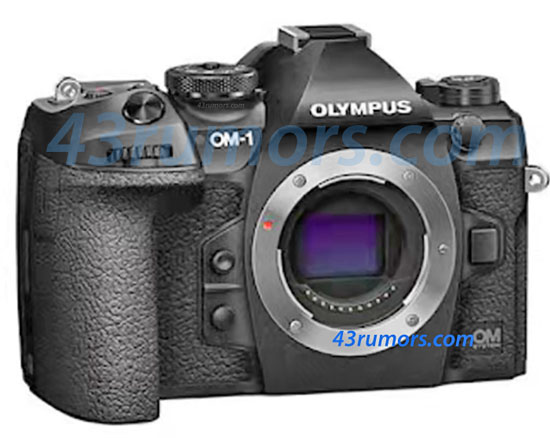
Olympus OM-1 Camera Images Leaked, we already have the detailed leaked specification of the camera here.
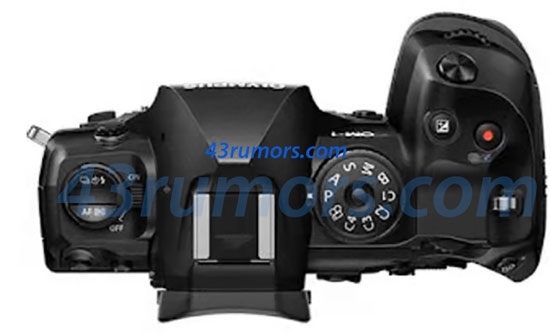
Back of the camera

Olympus OM-1 Rumored Specification
- 20mp IMX472 sensor from Sony
- 2 stop improvement low light with “Quad Bayer Structure”
- 120fps 12-bit RAW DCI
- 4K60P 10-bit 4:2:2
- 240fps 1080p
- 10fps mechanical shutter
- 20fps ‘normal’ high-speed shooting
- Handheld high res @ 50MP
- Tripod HR @80MP
- No 5MP raw mode
- 5.76m dot EVF with ~0.82x magnification
- 1.62m dot LCD
- 7 stops of IBIS
- Cross-type phase detection AF (1,053 points)
- C-AF tracking sensitivity settings – 5 steps (whatever that means)
- AI detection AF – Formula cars, rally cars, motorcycles / Aircrafts, helicopters / Bullet trains, standard trains, steamlocomotives / Birds / Dogs, cats
- ISO range LOW (approx.80) – 102400
- Electronic shutter (Silent mode)1/32000 – 60 sec
- Improved AF tracking
- Astro tracking
- Advanced Artificial Intelligent AF for animals, vehicles,etc…
- Higher-res LCD panel
- New battery(compatible with BLH-1)
- price slightly above $2,000
The Olympus OM-1 important dates.
- Announcement on February 15, 2022
- February 24, 2022, Pre-order sales start
- Released in March 2022
STAY WITH ON FACEBOOK | TWITTER | INSTAGRAM, to get live news + Olympus Rumors 24X7
By admin, on February 12th, 2022

According to the latest rumors surfaced over the web, Panasonic’s upcoming camera GH6 still uses the DFD (depth from de-focus) AF system. DFD is actually a contrast-based AF system and we were expecting that Panasonic GH6 will carry a better AF mechanism than DFD, but again we are disappointed.
But wait, let’s discuss more information we have related to the GH6 AF system (coming out from the source of the rumor mill).
- And last but not least a massive improvement in AF. It may be called DFD AI. They claim that tracking is 5 times better than in GH5.
5 Times better AF than of Panasonic GH5
If these lines are correct then for sure Panasonic GH6 will become the cash cow of the Panasonic Imagine division and will attract an entirely new consumer base towards the brand.
Other Rumored Specs of Panasonic GH6
- New Micro Four Thirds Sensor
- Updated Venus Engine Image Processor
- 5.7K 60p Video, 10-Bit Sampling
- DCI 4K 10-Bit 4:2:2, Unlimited Recording
Panasonic GH6 at B&H Website
See at Panasonic official website
more updates about Panasonic GH6
Follow us on our social pages FACEBOOK | TWITTER | INSTAGRAM, to get LIVE News and Panasonic Rumor
source 43rumor
|
KEEP THIS BLOG ALIVE - Support New Camera Buy Canon Lenses, Buy Music CD or Digital Camera at amazon it helps this site, and you do not pay anything extra, it is just a way to help support this site.

|


















